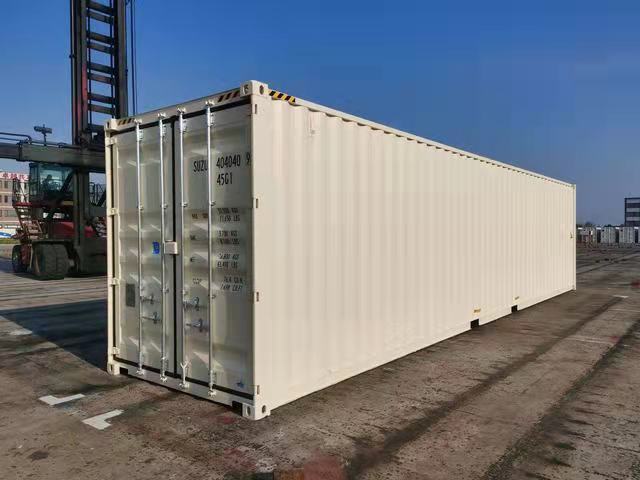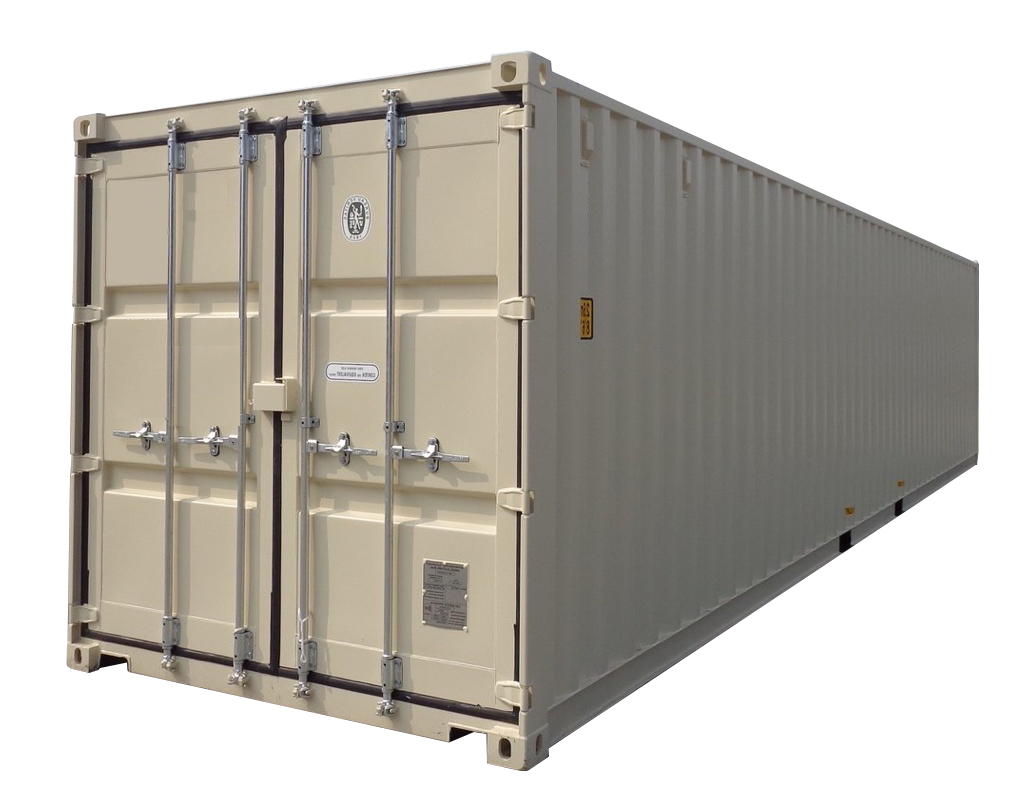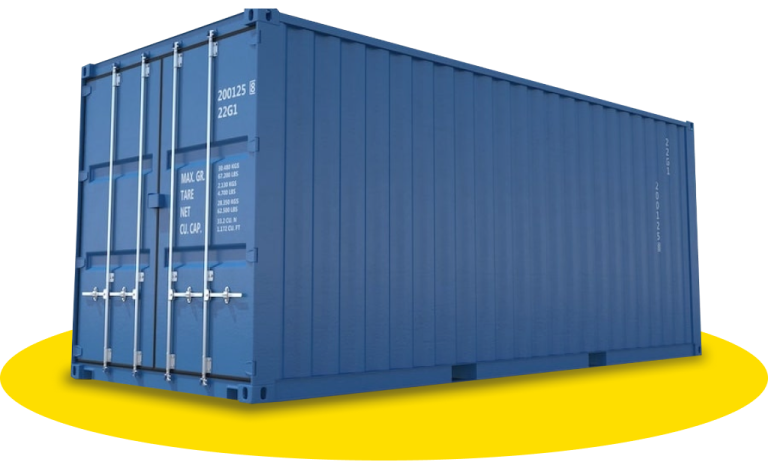The Ultimate Guide to Picking the Right Delivery Container for Your Requirements
When it comes to choosing the right delivery container, recognizing your specific demands is important. You'll want to take into account variables like dimension, type, and material to assure you make the most effective option. From standard dimensions to specialized options, there's a whole lot to discover. Plus, budgeting for both the container and any kind of alterations can make a huge difference. Let's damage down the crucial aspects to help you locate the excellent suitable for your demands.
Understanding Shipping Container Sizes
When you're picking a shipping container, recognizing the numerous sizes offered is important for making the ideal choice. Shipping containers usually come in basic lengths of 20 and 40 feet, yet you'll likewise locate other dimensions. Understanding the size you need relies on what you prepare to store or transport.If you're moving smaller sized things, a 20-foot container may be ideal, while larger deliveries often call for a 40-foot container. The height can additionally vary; high cube containers use added upright area, which can be helpful for taller goods.Before deciding, determine your freight, and take into consideration exactly how much room you'll require for loading and dumping. Constantly consider possible future needs-- choosing a slightly larger container might save you inconvenience down the line. Ultimately, choosing the ideal dimension will boost effectiveness and guarantee your items are protected throughout transportation
Kinds Of Delivery Containers Available
There are a number of types of shipping containers readily available, each designed for specific purposes and cargo demands. The basic dry container is versatile, ideal for general freight. If you're shipping perishable products, consider a cooled container, which preserves a regulated temperature. For large items, high cube containers provide additional elevation, suiting taller loads.If you need to carry heavy equipment or devices, flat shelf containers provide a strong base without walls. Open-top containers allow for very easy loading of high cargo, with a removable tarp covering for security. If you're looking for adaptability, take into consideration a retractable container that can be easily kept when not in use.Lastly, specialized containers like container containers are used for fluids, while vented containers are developed for bulk cargo that needs air flow. Understanding your cargo kind will certainly help you choose the best container to meet your delivery needs efficiently.
Material Considerations for Resilience
When picking a shipping container, the material plays an important role in its resilience. You'll wish to evaluate the benefits of steel versus light weight aluminum, specifically regarding deterioration resistance. Understanding these elements can assist you make a much more educated option for your shipping needs.
Steel vs. Aluminum Containers
Exactly how do you select between steel and aluminum containers for your shipping needs? Start by thinking about longevity. Steel containers are durable and offer superb toughness, making them ideal for heavy lots and rough conditions. They resist damages from effects and are commonly less expensive, which can be a major factor for budget-conscious buyers.On the other hand, light weight aluminum containers are light-weight, which can save you on shipping expenses. They're easier to steer and are a fantastic selection if you require to deliver products often. However, light weight aluminum is usually a lot more costly and less robust than steel. Evaluate your particular needs very carefully, consisting of weight, price, and the kind of cargo you'll be delivery, to make the appropriate option for your scenario.
Corrosion Resistance Aspects
Picking the appropriate product does not simply include weight and expense; rust resistance plays a considerable role in resilience. When selecting a shipping container, consider the setting it'll face. Steel containers, while solid, can corrosion if not correctly treated. Search for choices with safety layers or galvanization to improve their life expectancy. Aluminum, on the various other hand, supplies all-natural deterioration resistance, making it perfect for seaside areas or moist problems. It can be more pricey. Furthermore, examine the container's use-- if it'll be exposed to chemicals or harsh weather, focus on materials that can withstand these problems. Buying a corrosion-resistant container now can save you from pricey fixings or replacements down the line. Select intelligently for long-term advantages.
Alterations and Modification Options
Delivering containers aren't just for moving items; they can be changed to fulfill your details demands with various alterations and modification alternatives. You can transform a basic container right into a comfortable office space, a temporary retail shop, or also a personal gym. The opportunities are almost endless.Think concerning including home windows, insulation, or air flow to enhance comfort. You may also think about electrical circuitry, pipes, or even custom shelving to improve performance. If safety's a concern, strengthened locks can give peace of mind.For aesthetic charm, you can repaint the container or add a distinct layout to make it attract attention. Don't forget flooring alternatives-- whether you want durable plywood or something extra innovative, it can boost the space.Ultimately, customizing your delivery container to match your needs can boost usability and produce an one-of-a-kind environment that mirrors your design.
Evaluating Your Transport Requirements
When it involves utilizing your customized shipping container, understanding your transport requires is crucial. Start by identifying what you'll be delivery-- whether it's hefty tools, retail items, or individual things. Each kind of freight has various needs pertaining to size, weight, and accessibility.Next, take into consideration the range and mode of transport. Are you delivering in your area, nationally, or worldwide? This affects the container's style and performance. If you're making use of trucks, assure your container fits standard measurements for very easy loading and unloading.Additionally, think regarding transportation problems. Will your items require special security from weather condition or temperature fluctuations? If so, you might need insulation or ventilation functions in your container.Lastly, evaluate just how typically you'll be carrying goods. Constant deliveries might require a more long lasting and functional container to meet continuous needs. By addressing these elements, you'll be well-prepared to choose the appropriate shipping container for your requirements.
Budgeting for Your Shipping Container
Establishing an allocate your delivery container is crucial for making sure a smooth purchasing procedure. Initially, figure out exactly how much you can pay for to spend. Keep in mind that rates can vary considerably based on dimension, problem, and type. New containers generally cost much more, but used ones can supply considerable savings.Next, consider any type of extra costs you could sustain, such as transportation costs, delivery charges, and adjustments. If you intend to tailor the container, consider those expenditures also. Research different suppliers to compare rates and discover the most effective deal that fulfills your needs.Don' t fail to remember to include any kind of permits or guidelines that may put on your purchase and use the container. By clearly describing your go now budget, you'll be better prepared to make educated choices, guaranteeing you obtain the ideal container without breaking the financial institution.
Upkeep and Look After Long life
To ensure your shipping container lasts for several years, regular upkeep is vital. Beginning by checking the exterior for rust, dents, and damage. If you identify any concerns, address them quickly to avoid more damage. Clean the container occasionally, both inside and out, to get rid of dirt, debris, and wetness that can lead to corrosion.Ensure the doors secure appropriately and lube the hinges to stay clear of rust and sticking. If you're utilizing the container for storage, think about adding ventilation to minimize moisture and mold growth. For added protection, use a rust-inhibiting paint or sealer annually.If your container's situated in a severe setting, like seaside areas, you might require to boost maintenance regularity. Watch on the flooring, too; any indications of wear should be fixed right away. With these straightforward steps, you'll extend the life of your shipping container substantially.
Regularly Asked Inquiries
Just how Do I Find a Reliable Shipping Container Supplier?
To locate a trustworthy delivery container provider, start by looking into on the internet reviews, requesting for recommendations from visit friends or sector contacts, and contrasting costs. Always inspect their credentials and assurance they use quality containers that fulfill your needs.

Can I Lease a Shipping Container Rather Than Purchasing?
Yes, you can absolutely rent out a shipping container instead of acquiring one. Numerous distributors offer rental choices, which can conserve you money and supply flexibility if you just need it for a brief duration.
What Permits Are Needed for Container Placement?

Are Delivery Containers Weatherproof and Ideal for Outdoor Storage?
Yes, delivering containers are generally weatherproof, made to withstand rough conditions. Their durable construction keeps your products protected and dry, making them ideal for exterior storage. Simply guarantee appropriate air flow to stop moisture build-up inside.
Just how Do I Carry a Shipping Container Once Purchased?
